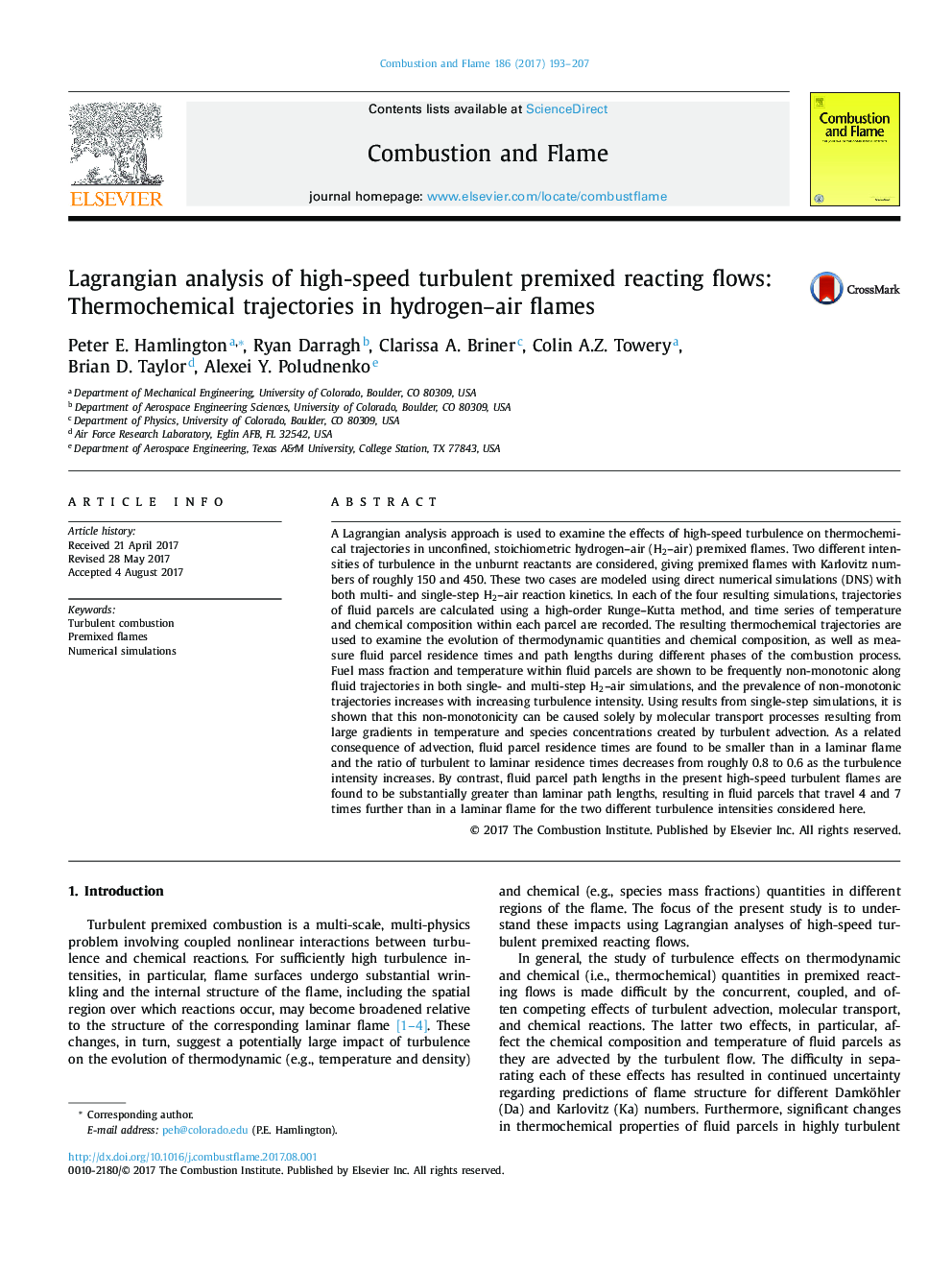| Article ID | Journal | Published Year | Pages | File Type |
|---|---|---|---|---|
| 4764356 | Combustion and Flame | 2017 | 15 Pages |
Abstract
A Lagrangian analysis approach is used to examine the effects of high-speed turbulence on thermochemical trajectories in unconfined, stoichiometric hydrogen-air (H2-air) premixed flames. Two different intensities of turbulence in the unburnt reactants are considered, giving premixed flames with Karlovitz numbers of roughly 150 and 450. These two cases are modeled using direct numerical simulations (DNS) with both multi- and single-step H2-air reaction kinetics. In each of the four resulting simulations, trajectories of fluid parcels are calculated using a high-order Runge-Kutta method, and time series of temperature and chemical composition within each parcel are recorded. The resulting thermochemical trajectories are used to examine the evolution of thermodynamic quantities and chemical composition, as well as measure fluid parcel residence times and path lengths during different phases of the combustion process. Fuel mass fraction and temperature within fluid parcels are shown to be frequently non-monotonic along fluid trajectories in both single- and multi-step H2-air simulations, and the prevalence of non-monotonic trajectories increases with increasing turbulence intensity. Using results from single-step simulations, it is shown that this non-monotonicity can be caused solely by molecular transport processes resulting from large gradients in temperature and species concentrations created by turbulent advection. As a related consequence of advection, fluid parcel residence times are found to be smaller than in a laminar flame and the ratio of turbulent to laminar residence times decreases from roughly 0.8 to 0.6 as the turbulence intensity increases. By contrast, fluid parcel path lengths in the present high-speed turbulent flames are found to be substantially greater than laminar path lengths, resulting in fluid parcels that travel 4 and 7 times further than in a laminar flame for the two different turbulence intensities considered here.
Related Topics
Physical Sciences and Engineering
Chemical Engineering
Chemical Engineering (General)
Authors
Peter E. Hamlington, Ryan Darragh, Clarissa A. Briner, Colin A.Z. Towery, Brian D. Taylor, Alexei Y. Poludnenko,
